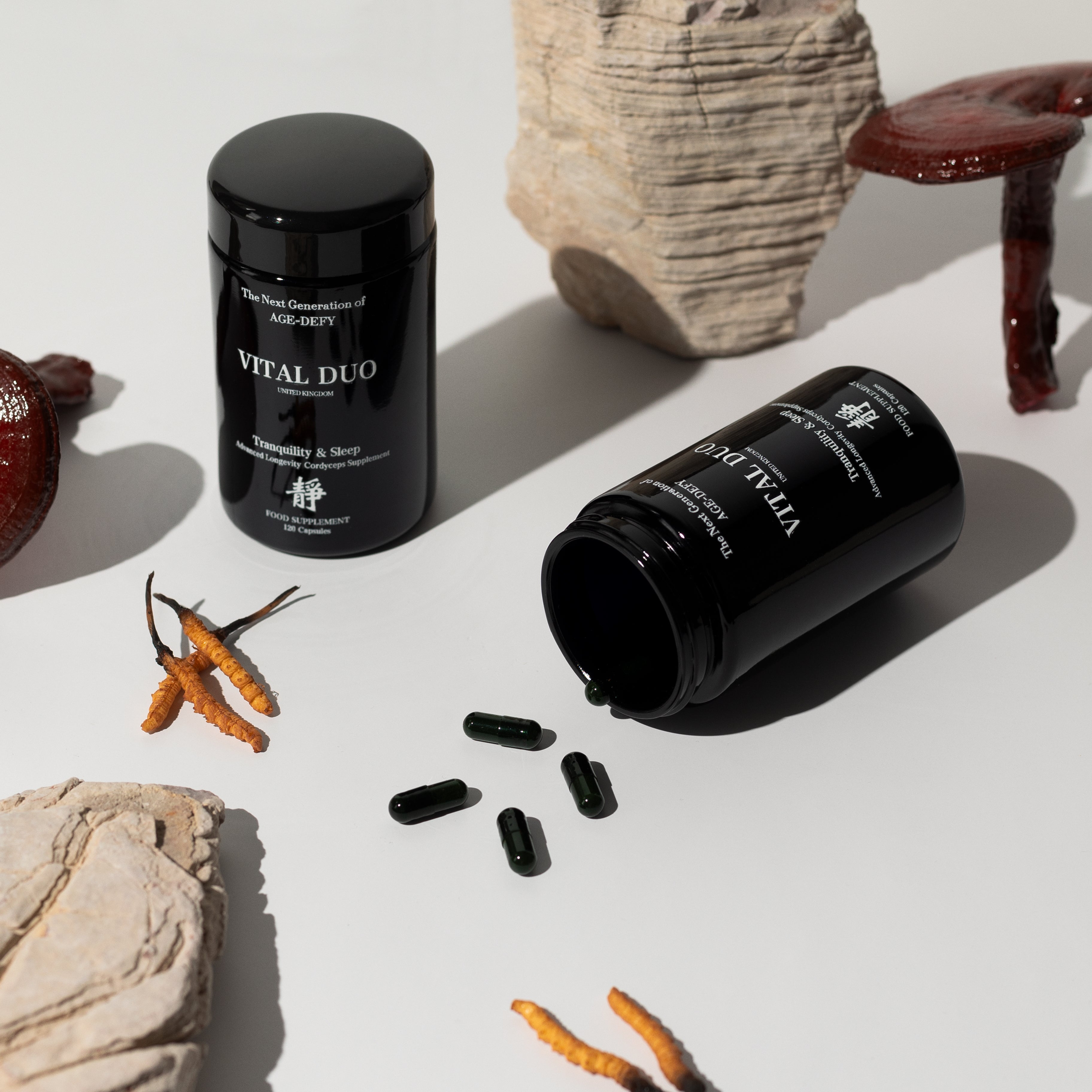
Tell you the hidden TRUTH other streetbrands wont tell you : Cordyceps Sinensis vs. Cordyceps Militaris in Traditional Chinese Medicine
Share
Cordyceps, often referred to as the "caterpillar fungus," has long been revered in Traditional Chinese Medicine (TCM) for its powerful health benefits. While both Cordyceps Sinensis and Cordyceps Militaris belong to the Cordyceps genus, they are distinct in their properties and effects on the body. Let's delve into the differences between these two varieties and explore why Cordyceps Sinensis is favored in TCM.
Cordyceps Sinensis vs. Cordyceps Militaris
Cordyceps Sinensis:
Cordyceps Sinensis is the original species of Cordyceps used in TCM for centuries. It grows naturally in the high-altitude regions of the Himalayas and Tibetan Plateau, where it parasitizes the larvae of caterpillars. Cordyceps Sinensis is renowned for its adaptogenic properties, meaning it helps the body adapt to stress and maintain balance.
Cordyceps Militaris:
Cordyceps Militaris is a cultivated species of Cordyceps that has gained popularity in recent years due to its ease of cultivation and availability. While it shares some similarities with Cordyceps Sinensis, it is considered to be less potent in TCM and may not offer the same level of therapeutic benefits.
Why Cordyceps Sinensis is Preferred in TCM
1. Traditional Use: Cordyceps Sinensis has been used in TCM for centuries and is deeply ingrained in traditional healing practices. Its efficacy and safety have been established through centuries of use, making it a trusted remedy in TCM.
2. Balancing Properties: Cordyceps Sinensis is prized for its ability to tonify the kidneys, nourish Yin energy, and promote overall vitality. It is particularly beneficial for individuals with kidney deficiency, a common concern in TCM associated with aging and stress.
3. Quality and Potency: Cordyceps Sinensis harvested from its natural habitat is believed to possess superior quality and potency compared to cultivated varieties like Cordyceps Militaris. Its unique growing conditions and symbiotic relationship with the caterpillar larvae contribute to its therapeutic effects.
Conclusion: Embracing the Wisdom of TCM
While Cordyceps Militaris may offer some health benefits, Cordyceps Sinensis remains the preferred choice in TCM for its traditional use, balancing properties, and superior quality. As we continue to explore the potential of Cordyceps in modern healthcare, let us not forget the wisdom of TCM and the valuable insights it offers into harnessing the healing power of nature.
In conclusion, Cordyceps Sinensis holds a special place in the realm of TCM, revered for its centuries-old tradition, balancing properties, and superior quality. By embracing the wisdom of TCM and incorporating Cordyceps Sinensis into our health regimen, we can tap into the rich therapeutic potential of this remarkable fungus and promote overall well-being and vitality.
Cordyceps Sinensis vs. Cordyceps Militaris
Cordyceps Sinensis:
Cordyceps Sinensis is the original species of Cordyceps used in TCM for centuries. It grows naturally in the high-altitude regions of the Himalayas and Tibetan Plateau, where it parasitizes the larvae of caterpillars. Cordyceps Sinensis is renowned for its adaptogenic properties, meaning it helps the body adapt to stress and maintain balance.
Cordyceps Militaris:
Cordyceps Militaris is a cultivated species of Cordyceps that has gained popularity in recent years due to its ease of cultivation and availability. While it shares some similarities with Cordyceps Sinensis, it is considered to be less potent in TCM and may not offer the same level of therapeutic benefits.
Why Cordyceps Sinensis is Preferred in TCM
1. Traditional Use: Cordyceps Sinensis has been used in TCM for centuries and is deeply ingrained in traditional healing practices. Its efficacy and safety have been established through centuries of use, making it a trusted remedy in TCM.
2. Balancing Properties: Cordyceps Sinensis is prized for its ability to tonify the kidneys, nourish Yin energy, and promote overall vitality. It is particularly beneficial for individuals with kidney deficiency, a common concern in TCM associated with aging and stress.
3. Quality and Potency: Cordyceps Sinensis harvested from its natural habitat is believed to possess superior quality and potency compared to cultivated varieties like Cordyceps Militaris. Its unique growing conditions and symbiotic relationship with the caterpillar larvae contribute to its therapeutic effects.
Conclusion: Embracing the Wisdom of TCM
While Cordyceps Militaris may offer some health benefits, Cordyceps Sinensis remains the preferred choice in TCM for its traditional use, balancing properties, and superior quality. As we continue to explore the potential of Cordyceps in modern healthcare, let us not forget the wisdom of TCM and the valuable insights it offers into harnessing the healing power of nature.
In conclusion, Cordyceps Sinensis holds a special place in the realm of TCM, revered for its centuries-old tradition, balancing properties, and superior quality. By embracing the wisdom of TCM and incorporating Cordyceps Sinensis into our health regimen, we can tap into the rich therapeutic potential of this remarkable fungus and promote overall well-being and vitality.




